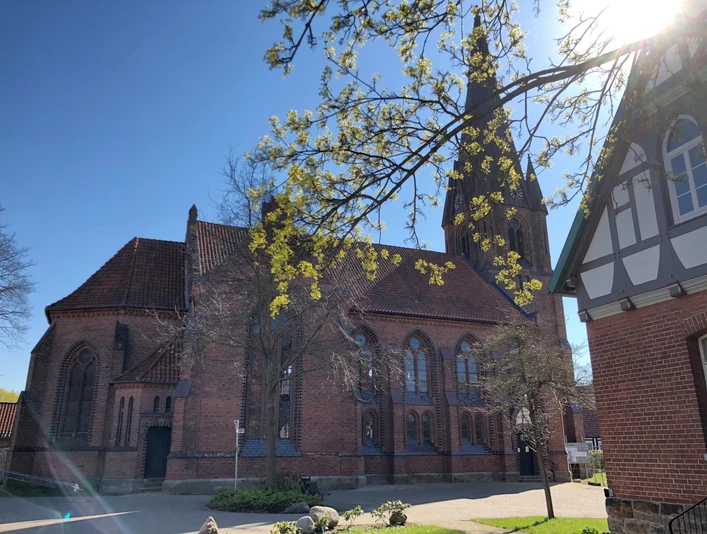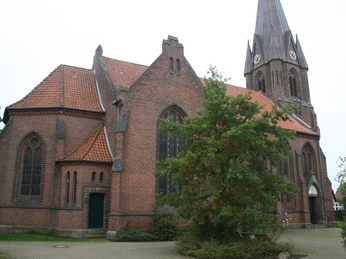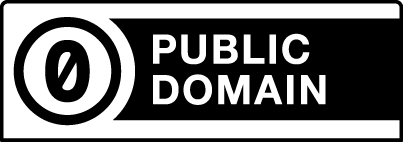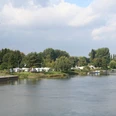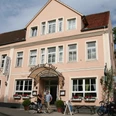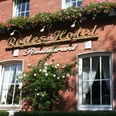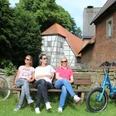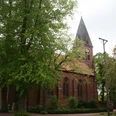- Photos & Map
How would you like to arrive?
- Call
- Description
- Good to know
- Nearby
The mighty church, consecrated in 1874, forms the focal point of the village center on the church square. It was built in the neo-Gothic style by master builder Meßwarb from Rehburg in a two-year construction period at a cost of 13,088 thalers and offers space for 600 people on solid wooden pews.
From the tower, visible from afar, the full-sounding peal of 3 steel bells rings out into the Weser valley, a bronze bell, cast in 1725 by Thomas Riedeweg in Hanover, strikes the clock and serves as a prayer bell. Inside the building, the light falls through the tall, slender windows onto the simple chancel with the well-known old crucifix, also known as the "Leese Cross", in front of which stands the 800-year-old Romanesque baptismal font made of sandstone with leaf ornaments. The pulpit rests on a beam from the former trestle windmill on the lake. A brass chandelier donated by Joachim Hotze in 1668 and an oil painting by an unknown artist on the west side bear witness to the village's old Christian tradition. The names of all those who died in the First World War are recorded on a large sandstone memorial plaque donated by American Germans, while the dead of the Second World War are commemorated in a book with a constantly changing page. The baroque organ with 18 stops, built by the Hanoverian company Becker, has since been renovated three times and attracts the visitor's eye and ear with its ornate principal pipes.
The Leese church is already the third on the same site. Count Erich of Hoya had the first Romanesque-style church demolished so that the stones could be used to build Stolzenau Castle. The subsequent half-timbered church with a 20-metre-high tower no longer met the needs of the congregation, was dilapidated and had to make way for the current one.
From the tower, visible from afar, the full-sounding peal of 3 steel bells rings out into the Weser valley, a bronze bell, cast in 1725 by Thomas Riedeweg in Hanover, strikes the clock and serves as a prayer bell. Inside the building, the light falls through the tall, slender windows onto the simple chancel with the well-known old crucifix, also known as the "Leese Cross", in front of which stands the 800-year-old Romanesque baptismal font made of sandstone with leaf ornaments. The pulpit rests on a beam from the former trestle windmill on the lake. A brass chandelier donated by Joachim Hotze in 1668 and an oil painting by an unknown artist on the west side bear witness to the village's old Christian tradition. The names of all those who died in the First World War are recorded on a large sandstone memorial plaque donated by American Germans, while the dead of the Second World War are commemorated in a book with a constantly changing page. The baroque organ with 18 stops, built by the Hanoverian company Becker, has since been renovated three times and attracts the visitor's eye and ear with its ornate principal pipes.
The Leese church is already the third on the same site. Count Erich of Hoya had the first Romanesque-style church demolished so that the stones could be used to build Stolzenau Castle. The subsequent half-timbered church with a 20-metre-high tower no longer met the needs of the congregation, was dilapidated and had to make way for the current one.
Good to know
Openings
Author
Mittelweser-Touristik GmbH
Lange Straße 18
31582 Nienburg/Weser
Organization
Mittelweser-Touristik GmbH
License (master data)
Mittelweser-Touristik GmbH
Nearby
